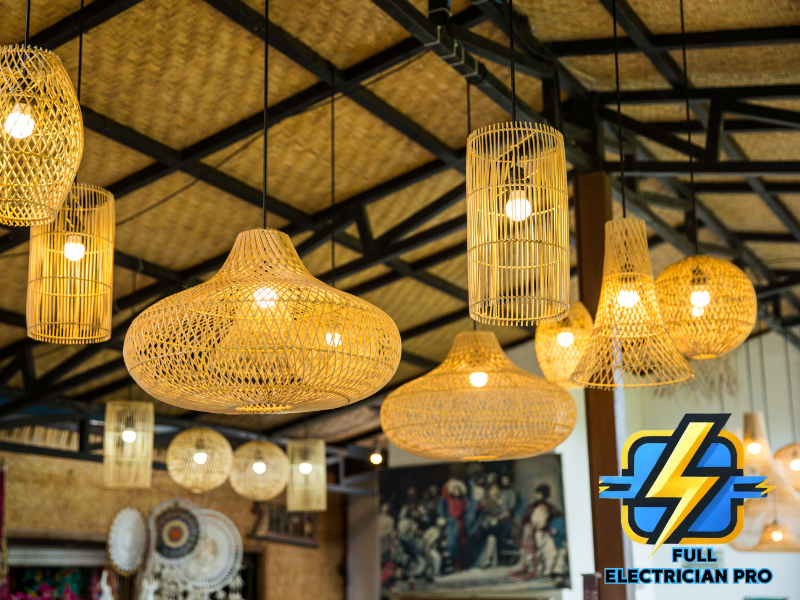
Pendant Lighting: Common Issues, Repairs, and Benefits
Pendant lighting is a versatile and stylish option for illuminating both residential and commercial spaces. From kitchens and dining areas to offices and showrooms, pendant lights offer focused illumination and can be a decorative statement. However, like any lighting system, pendant lights require proper installation and maintenance to function effectively. This guide explores the common and uncommon issues with pendant lighting, the necessary repairs, and the benefits of using pendant lights to enhance your space.
Common Issues with Pendant Lighting
1. Flickering Lights: One of the most common issues with pendant lighting is flickering, which can be caused by loose connections, faulty bulbs, or incompatible dimmer switches. Ensuring proper installation and using compatible components can resolve this issue.
2. Inadequate Lighting: If your pendant lights are not providing enough illumination, it may be due to incorrect bulb wattage or improper placement. Adjusting the height or bulb type can improve the lighting coverage.
3. Loose or Swaying Fixtures: Pendant lights that are not securely mounted can become loose or sway, especially if they are installed in high-traffic areas. This can be dangerous and requires immediate attention to prevent accidents.
4. Bulb Burnout: Pendant lights with exposed bulbs may experience frequent burnout due to heat buildup or poor-quality bulbs. Using energy-efficient LED bulbs can reduce the need for frequent replacements.
5. Difficulty in Changing Bulbs: Depending on the height of the ceiling or the design of the pendant light, changing bulbs can be challenging. It’s important to ensure that bulbs are easily accessible or to use long-lasting bulbs to minimize the need for replacements.
Uncommon or Complex Issues
1. Electrical Wiring Problems: Improper wiring during installation can cause pendant lights to malfunction or pose a safety hazard. Faulty wiring may lead to short circuits, blown fuses, or even electrical fires.
2. Overloading Circuits: If too many pendant lights or other electrical devices are connected to a single circuit, it can lead to circuit overloads, causing the lights to flicker, dim, or fail entirely.
3. Incompatible Dimmer Switches: Not all pendant lights are compatible with dimmer switches. Using an incompatible dimmer can cause buzzing, flickering, or reduced lifespan of the bulbs. Installing the correct dimmer for your pendant lights is essential.
4. Poor Ceiling Support: Pendant lights can be heavy, especially those made from metal or glass. If the ceiling doesn’t have adequate support, the fixture may sag or even fall, requiring reinforcement or relocation.
5. Custom or Vintage Fixtures: Custom or vintage pendant lights may require specialized installation or parts, making repairs more complicated. An electrician familiar with specialty lighting can help resolve these issues.
Pendant Lighting Repairs
1. Securing Loose Fixtures: If pendant lights are loose or swaying, they need to be re-secured to ensure safety. This may involve reinforcing the mounting hardware or adjusting the suspension cables.
2. Replacing Faulty Wiring: If the wiring is faulty or outdated, it may need to be replaced to prevent electrical problems. A licensed electrician can inspect and replace the wiring to ensure safe and reliable operation.
3. Installing Compatible Dimmer Switches: If you want to use dimmer switches with your pendant lights, installing compatible dimmers is crucial. This ensures that the lights operate smoothly without flickering or buzzing.
4. Upgrading to Energy-Efficient Bulbs: Upgrading to LED bulbs can reduce energy consumption and extend the life of your pendant lighting system. LEDs produce less heat and are more durable, making them ideal for pendant fixtures.
5. Repositioning for Better Lighting: If your pendant lights are not providing adequate illumination, they may need to be repositioned. Adjusting the height or spacing between fixtures can improve light distribution.
Reasons to Install Pendant Lighting
1. Aesthetic Appeal: Pendant lights are a popular design choice because of their ability to add style and sophistication to any space. They come in a wide range of designs, from modern to vintage, allowing you to match them with your décor.
2. Focused Lighting: Pendant lights provide focused illumination, making them ideal for task lighting over kitchen islands, dining tables, or workspaces. Their directed light improves visibility and reduces glare.
3. Versatility: Pendant lights can be used in various settings, from homes to offices and restaurants. They are available in different sizes and shapes, allowing for creative lighting designs that complement the overall atmosphere.
4. Space-Saving Design: Pendant lights are suspended from the ceiling, making them an excellent option for areas with limited floor space. This frees up space while still providing effective lighting.
5. Energy Efficiency: With the availability of LED pendant lights, you can enjoy stylish lighting while saving on energy costs. LED bulbs use less electricity, produce less heat, and last longer than traditional incandescent bulbs.
In conclusion, pendant lighting offers both aesthetic and practical benefits for homes and businesses. By addressing common issues and ensuring proper installation, pendant lights can provide effective and stylish illumination for any space. Whether upgrading to energy-efficient bulbs or securing loose fixtures, professional electricians can ensure your pendant lighting system functions safely and efficiently.